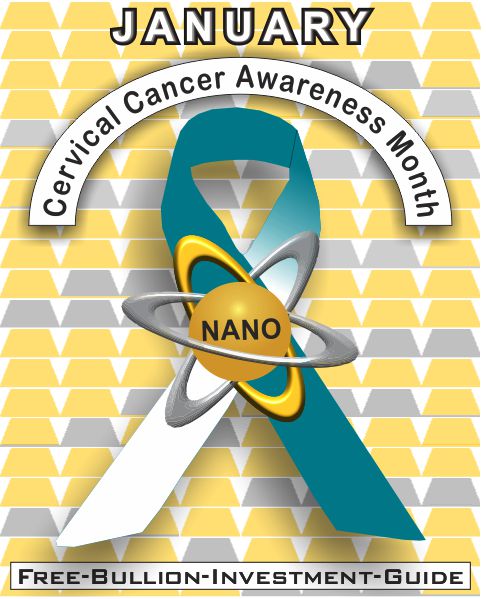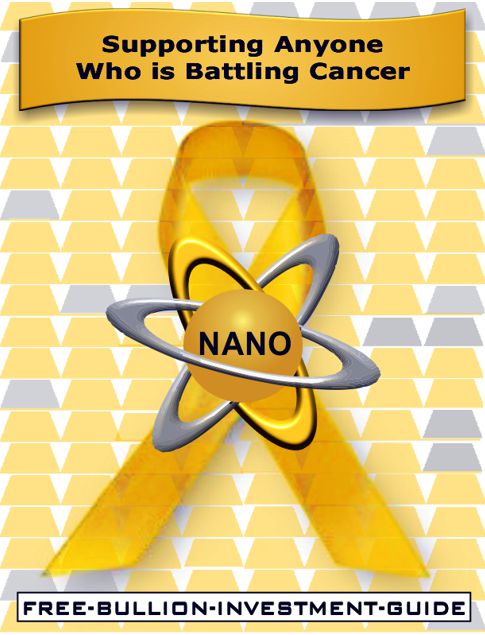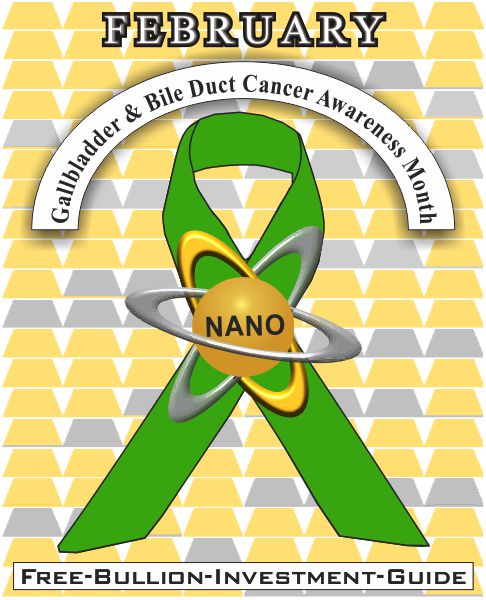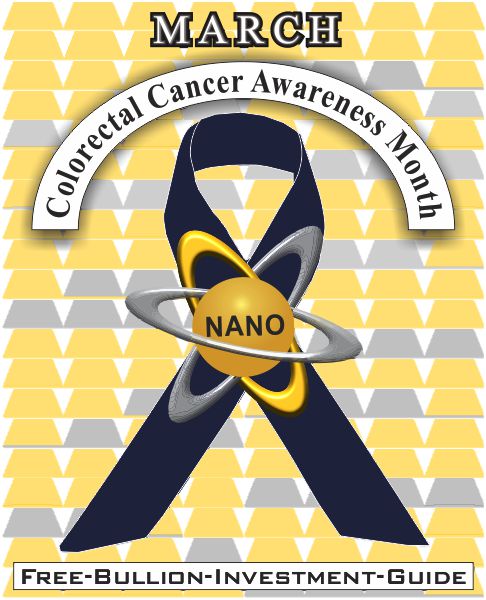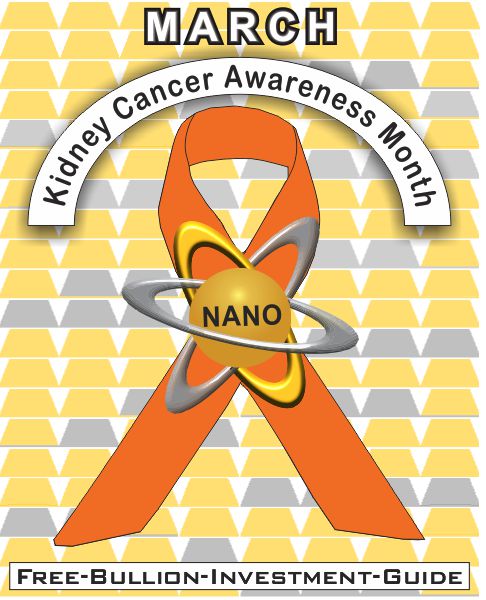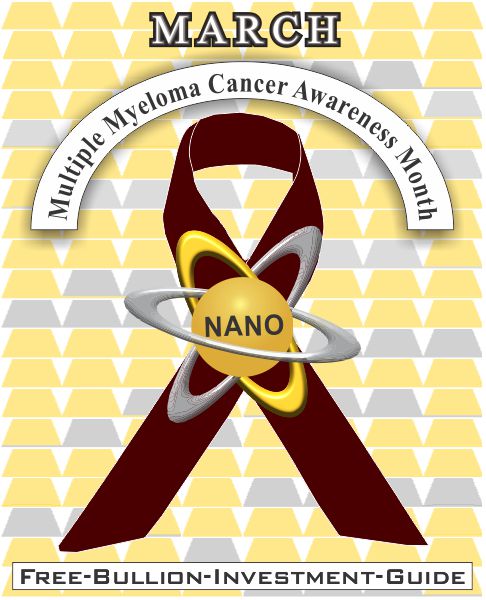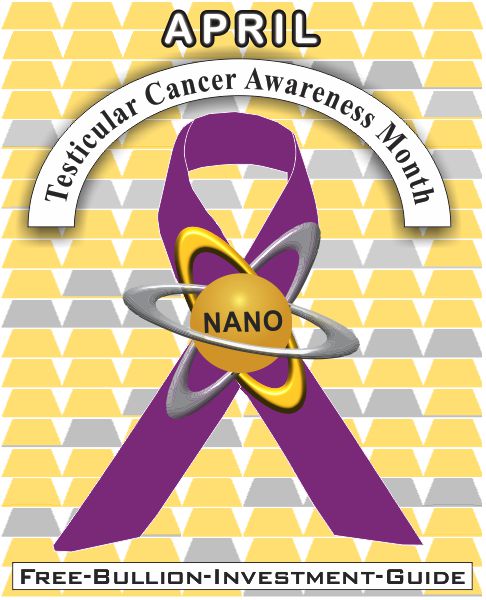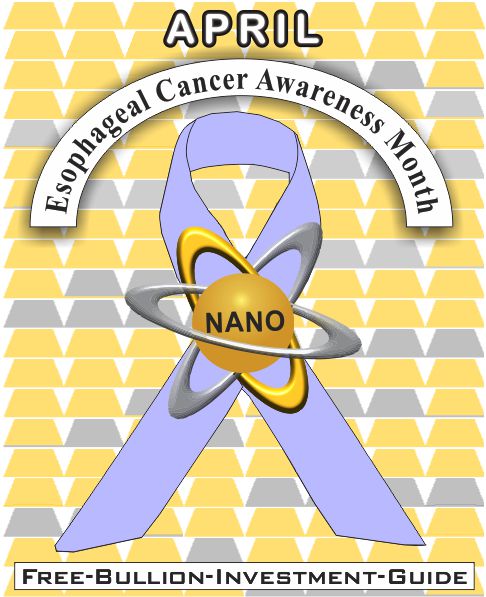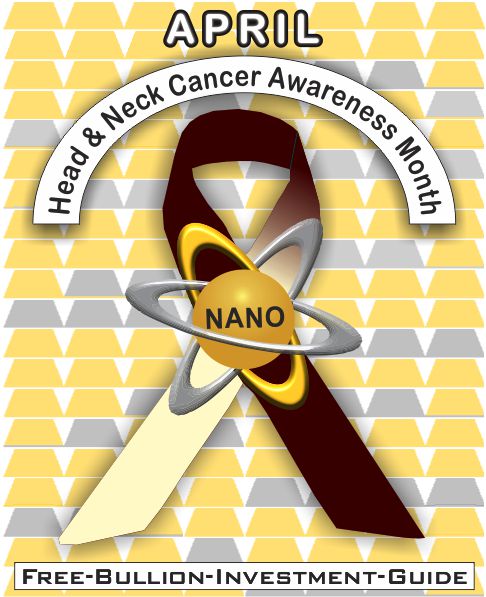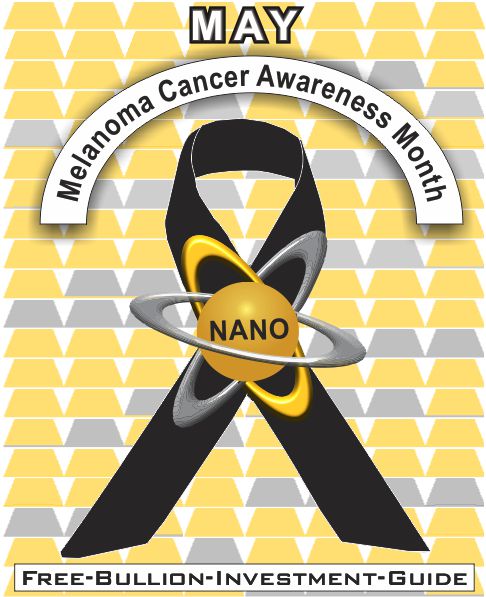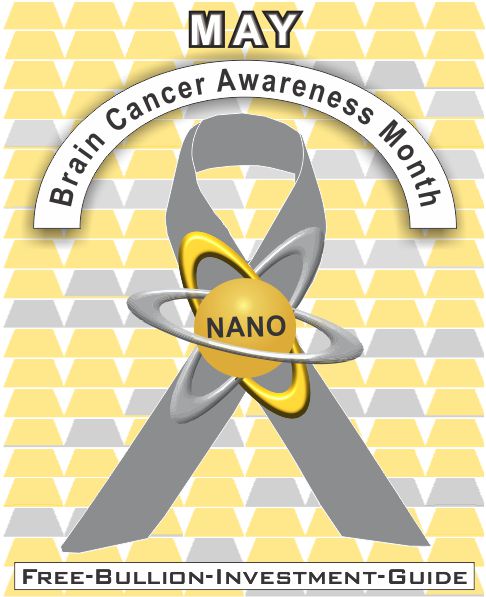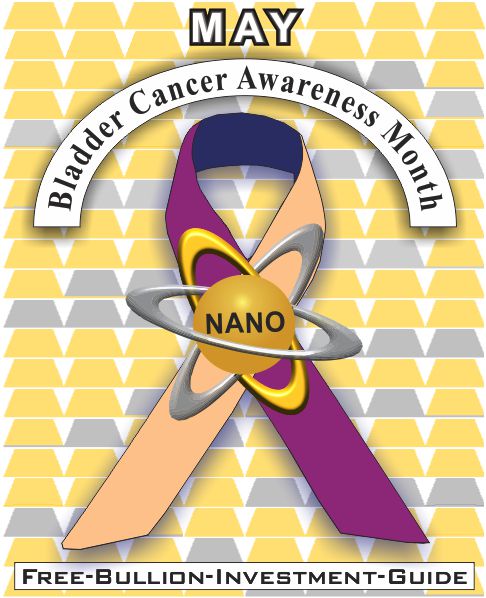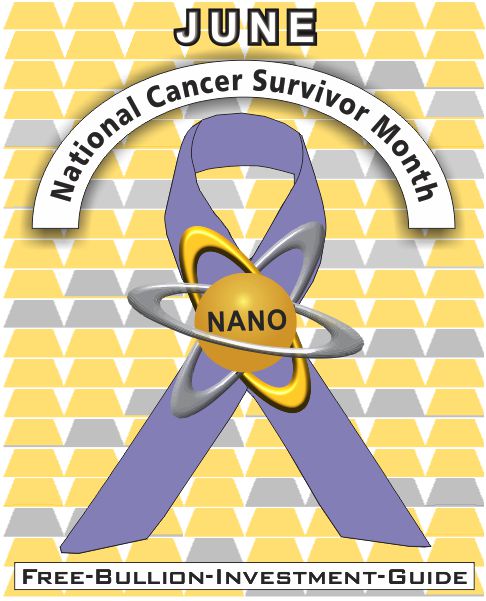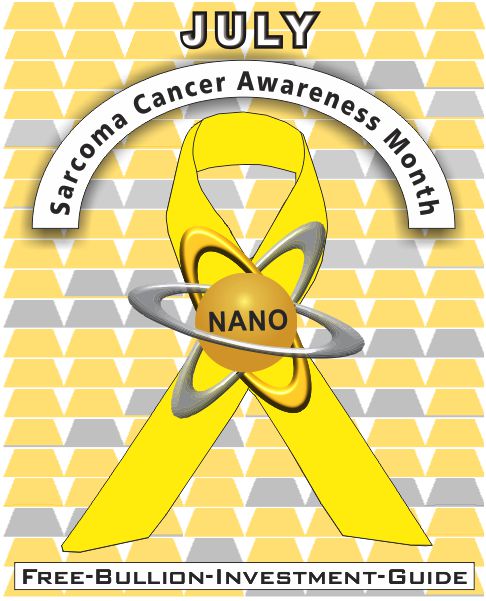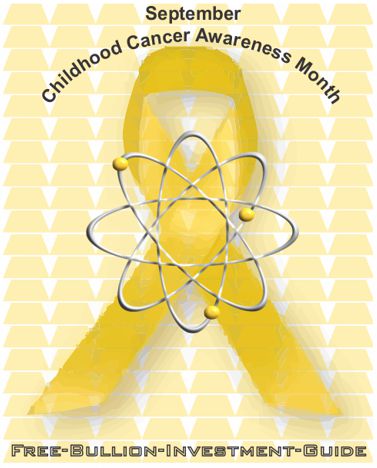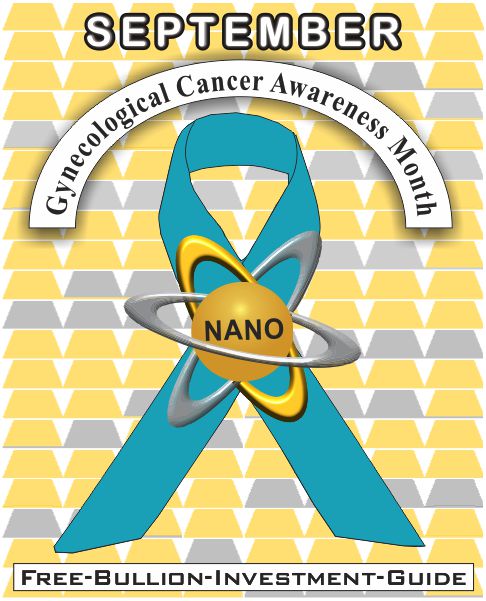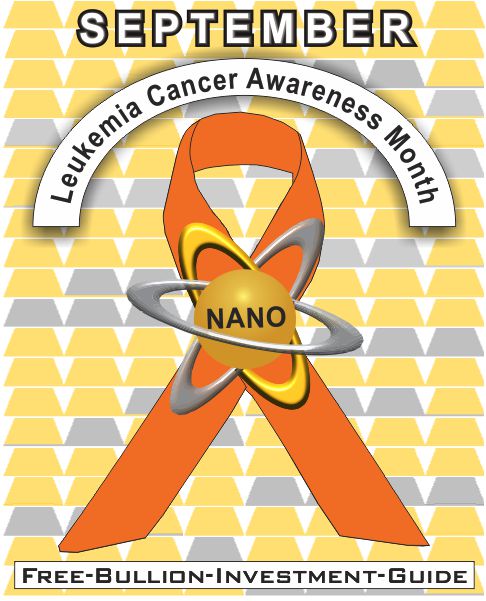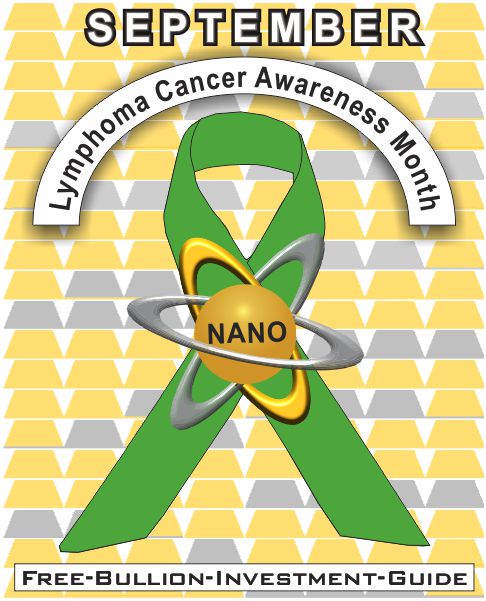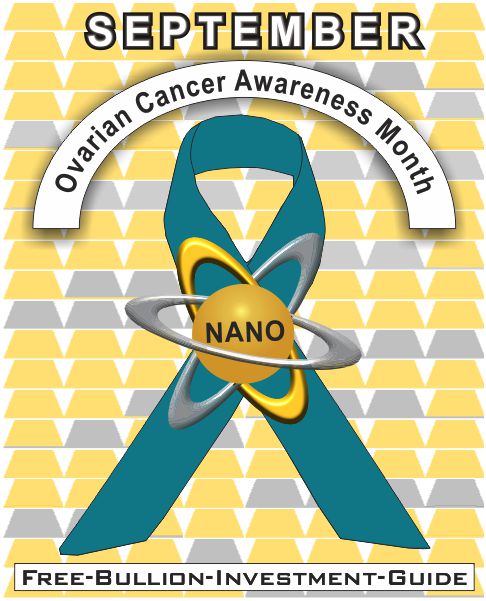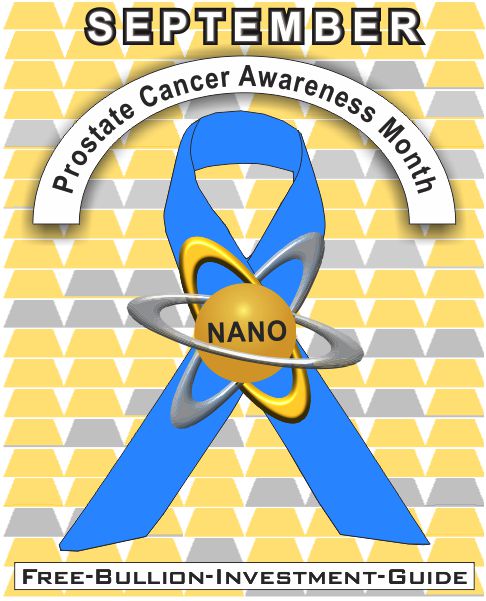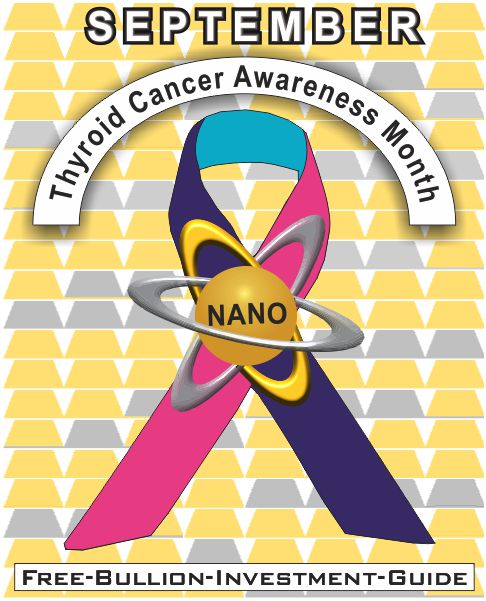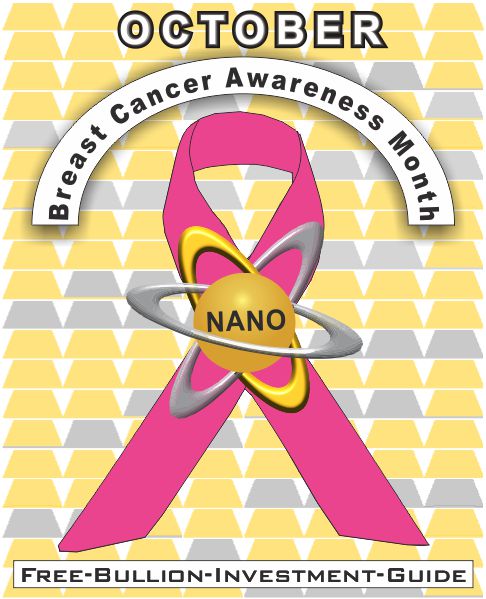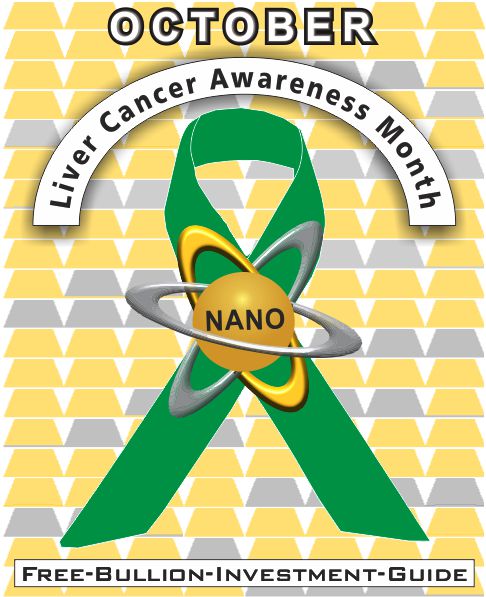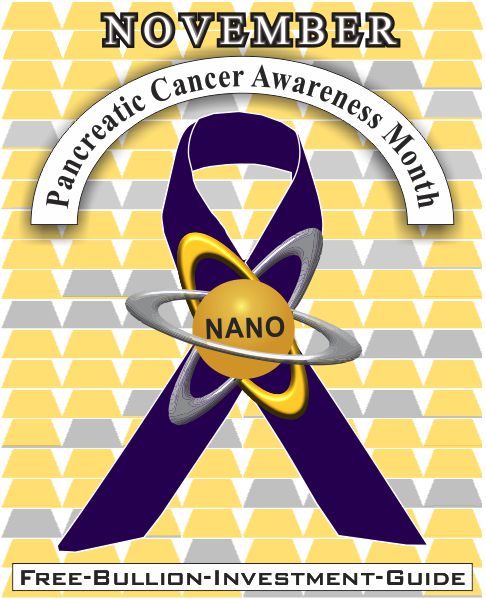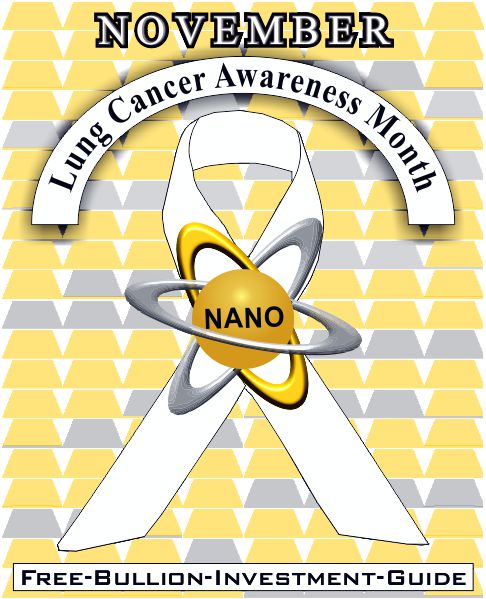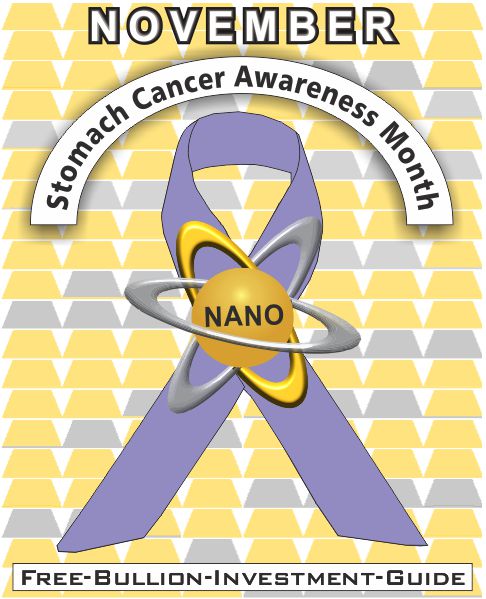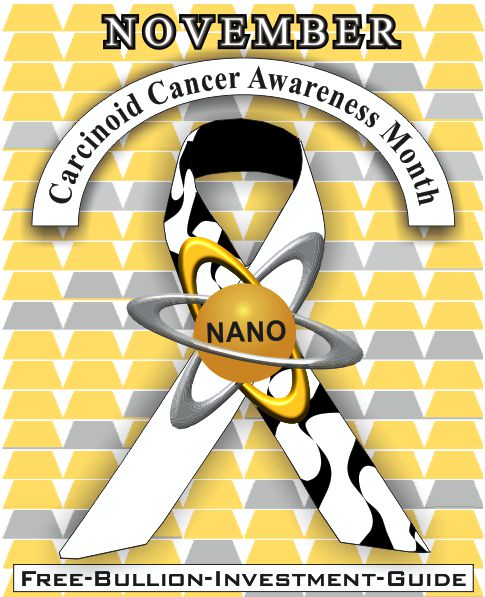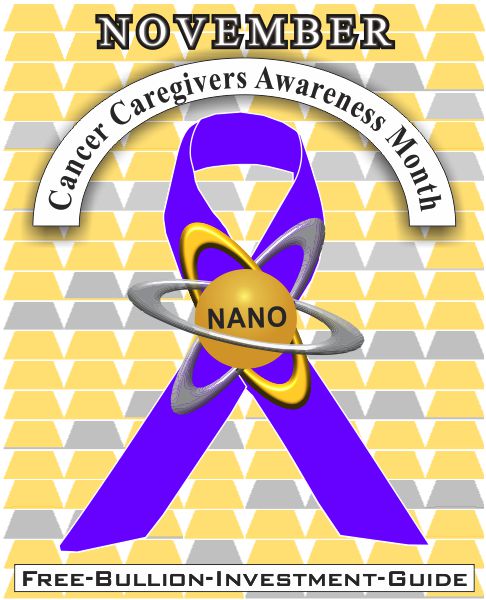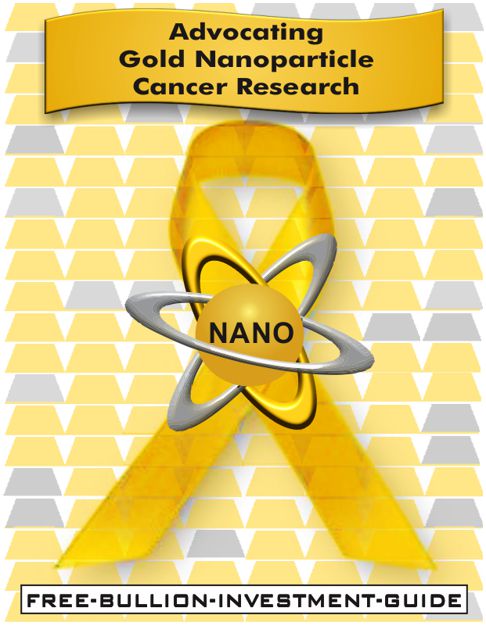Homepage / Cancer Info: Cancer AWARENESS


ExpressGoldCash - 4.9 star - Customer Reviews
Last Updated on 05/06/2024
Cancer Awareness
Months and Ribbons
Cancer Awareness Information Directory
Click on Cancer Awareness Month or Cancer Name to learn about each
type of cancer, how to fight it, and other resources,
including crowdfunding links.
September |
October |
Clinical Cancer Trials
Information & Resources
Cancer Discussion
Forums
Universal Resources
for Fighting Cancer
Universal International Resources
for Fighting Cancer
January
Cervical CancerCervical Cancer is a cancer arising from the cervix or in the any layer of the wall of the cervix. It is due to the abnormal growth of cells that have the ability to invade or spread to other parts of the body. Early on, typically no symptoms are seen. Later symptoms may include abnormal vaginal bleeding, pelvic pain or pain during sexual intercourse. While bleeding after sex may not be serious, it may also indicate the presence of cervical cancer. Human papillomavirus infection (HPV) causes more than 90% of cases; most who have had HPV infections, however, do not develop cervical cancer. HPV 16 and 18 strains are responsible for nearly 50% of high grade cervical pre-cancers. Other risk factors include smoking, a weak immune system, birth control pills, starting sex at a young age, and having many sexual partners, but these are less important. Genetic factors also contribute to cervical cancer risk. Cervical cancer typically develops from precancerous changes called cervical intraepithelial neoplasia over 10 to 20 years. About 90% of cervical cancer cases are squamous cell carcinomas, 10% are adenocarcinoma, and a small number are other types. Diagnosis is typically by cervical screening followed by a biopsy. Medical imaging is then done to determine whether or not the cancer has spread. Source: Cervical cancer wikipedia.orgCervical Cancer - InformationThe links below will take you directly to the website's pages on Cervical Cancer Cervical Cancer - Resources
National Cervical Cancer Coalition Smart Patients - Cervical Cancer Clinical Trials Smart Patients - Cervical Cancer Community Cervical Cancer - International ResourcesAustralian Cervical Cancer Foundation Cancer Research UK - Cervical cancer resources and support organizations European Society for Medical Oncology (ESMO) - Cervical Cancer: A Guide for Patients Jo's Cervical Cancer Trust (UK) Cervical Cancer - Crowdfunding
The links below will take you directly to the website's pages for those who need help fighting Cervical Cancer GiveSendGo - Cervical Cancer FightersInternational Crowdfunding JustGiving (UK) - Cervical Cancer Fighters |

ExpressGoldCash - 4.9 star - Customer Reviews
Clinical Trials
|

February
Gallbladder & Bile Duct Cancer
Gallbladder cancer is a relatively uncommon cancer, with an incidence of fewer than 2 cases per 100,000 people per year in the United States. It is particularly common in central and South America, central and eastern Europe, Japan and northern India; it is also common in certain ethnic groups e.g. Native American Indians and Hispanics. If it is diagnosed early enough, it can be cured by removing the gallbladder, part of the liver and associated lymph nodes. Most often it is found after symptoms such as abdominal pain, jaundice and vomiting occur, and it has spread to other organs such as the liver. It is a rare cancer that is thought to be related to gallstones building up, which also can lead to calcification of the gallbladder, a condition known as porcelain gallbladder. Cholangiocarcinoma, also known as bile duct cancer, is a type of cancer that forms in the bile ducts. Symptoms of cholangiocarcinoma may include abdominal pain, yellowish skin, weight loss, generalized itching, and fever. Light colored stool or dark urine may also occur. Other biliary tract cancers include gallbladder cancer and cancer of the ampulla of Vater. Cholangiocarcinoma is typically incurable at diagnosis which is why early detection is ideal. In these cases palliative treatments may include surgical resection, chemotherapy, radiation therapy, and stenting procedures. In about a third of cases involving the common bile duct and less commonly with other locations the tumor can be completely removed by surgery offering a chance of a cure. Even when surgical removal is successful chemotherapy and radiation therapy are generally recommended. In certain cases surgery may include a liver transplantation. Even when surgery is successful the 5-year survival is typically less than 50%. Source: Gallbladder Cancer - wikipediaSource: Bile Duct Cancer - wikipedia Gallbladder & Bile Duct Cancer -InformationThe links below will take you directly to the website's pages on Gallbladder & Bile Duct Cancer Cancer.Net - Gallbladder Cancer Cancer.Net - Bile Duct Cancer John Hopkins - Gallbladder Disease Johns Hopkins - Bile Duct Cancer MedicineNet - Bile Duct Cancer Medline Plus - Gallbladder Cancer Medline Plus - Bile Duct Cancer Memorial Sloan Kettering Cancer Center - Gallbladder Cancer Memorial Sloan Kettering Cancer Center - Bile Duct Cancer National Cancer Institute - Gallbladder Cancer National Cancer Institute - Bile Duct Cancer Gallbladder & Bile Duct Cancer -ResourcesCity of Hope - Bile Duct Cancer City of Hope - Gallbladder Cancer Smart Patients Bile Duct Cancer Clinical Trials Smart Patients Bile Duct Cancer Community Smart Patients Gallbladder Cancer Clinical Trials Smart Patients Gallbladder Cancer Community The Cholangiocarinoma Foundation Gallbladder & Bile-Duct Cancer - International ResourcesAMMF (UK) - The Cholangiocarcinoma CharityBritish Association for the Study of the Liver (BASL) Cancer Research UK - Gallbladder cancer resources and support organizations European Society For Medical Oncology (ESMO) - Biliary Tract Cancer: A Guide for Patients Gut Cancer Foundation - New Zealand Pancare Foundation - Australia Gallbladder & Bile Duct Cancer - CrowdfundingThe links below will take you directly to the website's pages for those who need help fighting Gallbladder & Bile Duct Cancer. GiveSendGo - Bile Duct Cancer Fighters International Crowdfunding JustGiving (UK) - Gallbladder Cancer Fighters JustGiving (UK) - Bile Duct Cancer Fighters |
March
Colorectal Cancer
Colorectal cancer (CRC), also known as bowel cancer, colon cancer, or rectal cancer, is the development of cancer from the colon or rectum (parts of the large intestine). Signs and symptoms may include blood in the stool, a change in bowel movements, weight loss, abdominal pain and fatigue. Most colorectal cancers are due to old age and lifestyle factors, with only a small number of cases due to underlying genetic disorders. Risk factors include diet, obesity, smoking, and lack of physical activity. Dietary factors that increase the risk include red meat, processed meat, and alcohol. Another risk factor is inflammatory bowel disease, which includes Crohn's disease and ulcerative colitis. Some of the inherited genetic disorders that can cause colorectal cancer include familial adenomatous polyposis and hereditary non-polyposis colon cancer; however, these represent less than 5% of cases. It typically starts as a benign tumor, often in the form of a polyp, which over time becomes cancerous. Colorectal cancer may be diagnosed by obtaining a sample of the colon during a sigmoidoscopy or colonoscopy. This is then followed by medical imaging to determine whether the disease has spread. Treatments used for colorectal cancer may include some combination of surgery, radiation therapy, chemotherapy, and targeted therapy. Cancers that are confined within the wall of the colon may be curable with surgery, while cancer that has spread widely is usually not curable, with management being directed towards improving quality of life and symptoms. The five-year survival rate in the United States was around 65% in 2014. The individual likelihood of survival depends on how advanced the cancer is, whether or not all the cancer can be removed with surgery, and the person's overall health. Source: Colorectal Cancer wikipedia.orgColorectal Cancer - InformationThe links below will take you directly to the website's pages on Colorectal Cancer Colorectal Cancer - ResourcesGlobal Colon Cancer Association Meredith's Miracles Colon Cancer Foundation Never Too Young for Colon Cancer Smart Patients - Colorectal Clinical Trials Smart Patients - Colorectal Cancer Community Susan Cohan Colon Cancer Foundation Colorectal Cancer - International ResourcesCancer Research UK - Colorectal Cancer resources and support organizations European Society for Medical Oncology - Colorectal Cancer: A Guide for PatientsColorectal Cancer - CrowdfundingThe links below will take you directly to the website's pages for those who need help fighting Colorectal Cancer GiveSendGo - Colorectal Cancer FightersInternational Crowdfunding Just Giving - Colorectal Cancer Fighters |
Kidney Cancer
Kidney cancer, also known as Renal cancer, is a group of cancers that starts in the kidney. Symptoms may include blood in the urine, a lump in the abdomen, or back pain. Fever, weight loss, and tiredness may also occur. The main types of kidney cancer are renal cell cancer (RCC), transitional cell cancer (TCC), and Wilms' tumor. RCC makes up approximately 80% of kidney cancers, and TCC accounts for most of the rest. Risk factors for RCC and TCC include smoking, certain pain medications, previous bladder cancer, being overweight, high blood pressure, certain chemicals, and a family history. Risk factors for Wilms' tumor include a family history and certain genetic disorders such as WAGR syndrome. Diagnosis may be suspected based on symptoms, urine testing, and medical imaging. It is confirmed by tissue biopsy. Treatment may include surgery, radiation therapy, chemotherapy, immunotherapy, and targeted therapy. Onset is usually after the age of 45. Males are affected more often than females. The overall five-year survival rate is 75% in the United States, 71% in Canada, 70% in China, and 60% in Europe. For cancers that are confined to the kidney, the five-year survival rate is 93%, if it has spread to the surrounding lymph nodes it is 70%, and if it has spread widely, it is 12%. Source: Kidney Cancer wikipedia.orgKidney Cancer - Information
The links below will take you directly to the website's pages on Kidney Cancer Kidney Cancer - Resources
ACKC - Action to Cure Kidney Cancer Smart Patients - Kidney Disease Clinical Trials Smart Patients - Kidney Disease Community Smart Patients - Kidney Cancer Clinical Trials Smart Patients - Kidney Cancer Community Kidney Cancer International ResourcesKidney Cancer UK - Kidney Cancer resources and support organizations Kidney Cancer - CrowdfundingThe links below will take you directly to the website's pages for those who need help fighting Kidney Cancer GiveSendGo - Kidney Cancer FightersInternational Crowdfunding Just Giving - Kidney Cancer Fighters |

ExpressGoldCash - 4.9 star - Customer Reviews
Multiple Myeloma CancerMultiple Myeloma Cancer is a cancer of plasma cells, a type of white blood cell normally responsible for producing antibodies. In multiple myeloma, collections of abnormal plasma cells accumulate in the bone marrow, where they interfere with the production of normal blood cells. Most cases of multiple myeloma also feature the production of a paraprotein—an abnormal antibody which can cause kidney problems. Bone lesions and hypercalcemia (high blood calcium levels) are also often encountered. The cause of multiple myeloma is unknown. Risk factors include obesity, radiation exposure, family history, age and certain chemicals. There is an increased risk of multiple myeloma in certain occupations. This is due to the occupational exposure to aromatic hydrocarbon solvents having a role in causation of multiple myeloma. Multiple myeloma may develop from monoclonal gammopathy of undetermined significance (MGUS) that progresses to smoldering myeloma. The abnormal plasma cells produce abnormal antibodies, which can cause kidney problems and overly thick blood. The plasma cells can also form a mass in the bone marrow or soft tissue. When one tumor is present, it is called a plasmacytoma; more than one is called multiple myeloma. Multiple myeloma is diagnosed based on blood or urine tests finding abnormal antibody proteins - (often using electrophoretic techniques revealing the presence of a monoclonal spike in the results - termed an m-spike), bone marrow biopsy finding cancerous plasma cells, and medical imaging finding bone lesions. Another common finding is high blood calcium levels. Multiple Myeloma Cancer - Information
The links below will take you directly to the website's pages on Multiple Myeloma Multiple Myeloma Cancer - Resources
International Myeloma Foundation Smart Patients - Multiple Myeloma Clinical TrialsSmart Patients - Multiple Myeloma Community Multiple Myeloma Research Foundation Multiple Myeloma Cancer - International Resources
Blood Cancer UK
Cancer Research UK - Multiple Myeloma Cancer resources and support organizations European Society for Medical Oncology - Multiple Myeloma: A Guide for Patients International Myeloma Foundation Myeloma UK UK Myeloma Society Multiple Myeloma Cancer - CrowdfundingThe links below will take you directly to the website's pages for those who need help fighting Multiple Myeloma Cancer GiveSendGo - Multiple Myeloma Cancer FightersInternational Crowdfunding Just Giving - Multiple Meyloma Cancer Fighters |

April
Testicular Cancer
is cancer that develops in the testicles, a part of the male reproductive system. There are many other conditions, such as testicular microlithiasis, epididymal cysts, and appendix testis (hydatid of Morgagni), which may be painful but are non-cancerous. If the cancer has not spread outside the testicle, the 5-year survival is 99% while if it has grown into nearby structures or has spread to nearby lymph nodes, the rate is 96% and if it has spread to organs or lymph nodes away from the testicles, the 5-year survival is around 74%. Even for the relatively few cases in which cancer has spread widely, chemotherapy offers a cure rate of at least 80%. Globally testicular cancer affected about 686,000 people in 2015. That year it resulted in 9,400 deaths up from 7,000 deaths in 1990. Rates are lower in the developing than the developed world. Onset most commonly occurs in males 20 to 34 years old, rarely before 15 years old. The five-year survival rate in the United States is about 95%. Outcomes are better when the disease remains localized. Source: Testicular Cancer wikipedia.orgTesticular Cancer - InformationThe links below will take you directly to the website's pages on Testicular Cancer Testicular Cancer - ResourcesMovember Foundation - Mental health and suicide prevention, prostate cancer and testicular cancer – we’re taking them all onSmart Patients - Testicular Cancer Clinical Trials Smart Patients - Testicular Cancer Community Testicular Cancer Awareness Foundation Testicular Cancer Foundation Testicular Cancer Society Testicular Cancer Society - Forum The Testicular Cancer Center Testicular Cancer - International ResourcesCancer Research UK - Testicular Cancer resources and support organizationsTesticular Cancer Canada Testicular Cancer UK (TCUK) European Society for Medical Oncology - Testicular Cancer: A Guide for Patients Testicular Cancer - CrowdfundingThe links below will take you directly to the website's pages for those who need help fighting Testicular Cancer GiveSendGo - Testicular Cancer FightersInternational Crowdfunding JustGiving (UK) - Testicular Cancer Fighters |

Esophageal Cancer
Esophageal cancer (or oesophageal cancer) is cancer arising from the esophagus—the food pipe that runs between the throat and the stomach. Symptoms often include difficulty in swallowing and weight loss. Other symptoms may include pain when swallowing, a hoarse voice, enlarged lymph nodes ("glands") around the collarbone, a dry cough, and possibly coughing up or vomiting blood. The two main sub-types of the disease are esophageal squamous-cell carcinoma (often abbreviated to ESCC), which is more common in the developing world, and esophageal adenocarcinoma (EAC), which is more common in the developed world. A number of less common types also occur. Squamous-cell carcinoma arises from the epithelial cells that line the esophagus. Adenocarcinoma arises from glandular cells present in the lower third of the esophagus, often where they have already transformed to intestinal cell type (a condition known as Barrett's esophagus). Causes of the squamous-cell type include tobacco, alcohol, very hot drinks, poor diet, and chewing betel nut. The most common causes of the adenocarcinoma type are smoking tobacco, obesity, and acid reflux. The disease is diagnosed by biopsy done by an endoscope (a fiberoptic camera). Prevention includes stopping smoking and eating a healthy diet. Treatment is based on the cancer's stage and location, together with the person's general condition and individual preferences. Small localized squamous-cell cancers may be treated with surgery alone with the hope of a cure. In most other cases, chemotherapy with or without radiation therapy is used along with surgery. Larger tumors may have their growth slowed with chemotherapy and radiation therapy. In the presence of extensive disease or if the affected person is not fit enough to undergo surgery, palliative care is often recommended. Source: Esophageal Cancer wikipedia.orgEsophageal Cancer - InformationThe links below will take you directly to the website's pages on Esophageal Cancer American Cancer SocietyCancer.Net Cleveland Clinic Mayo Clinic MedicineNet National Cancer Institute Esophageal Cancer - ResourcesAnthony V. Mannino FoundationDeGregorio Family Foundation - Research & Education for Stomach & Esophageal Cancer Esophageal Cancer Awareness Association (ECAA) Esophageal Cancer Action Network (ECAN) Esophageal Cancer Education Foundation (ECEF) Smart Patients - Esophageal Cancer Clinical Trials Smart Patients - Esophageal Cancer Community The Salgi Esophageal Cancer Research Foundation Esophageal Cancer - International ResourcesCancer Research UK Resources and organisations for oesophageal cancerEuropean Society for Medical Oncology - Oesophageal Cancer: A Guide for Patients Guts UK Heartburn Cancer UK Esophageal Cancer - CrowdfundingThe links below will take you directly to the website's pages for those who need help fighting Esophageal Cancer GiveSendGo - Esophageal Cancer FightersInternational Crowdfunding JustGiving (UK) - Esophageal Cancer Fighters |

ExpressGoldCash - 4.9 star - Customer Reviews
Head & Neck Cancer
Head and neck cancer develops from tissues in the lip and oral cavity (mouth), larynx (throat), salivary glands, nose, sinuses, or skin of the face. The most common types of head and neck cancer occur in the lips, mouth, and larynx. Symptoms predominantly include a sore that does not heal or a change in the voice. In those with advanced disease, there may be unusual bleeding, facial pain, numbness or swelling, and visible lumps on the outside of the neck or oral cavity. Given the location of these cancers, it is possible for an afflicted individual to experience difficulty breathing. The majority of head and neck cancer is caused by the use of alcohol or tobacco, including smokeless tobacco, with increasing cases linked to the human papillomavirus (HPV). Other risk factors include the Epstein–Barr virus, betel quid, radiation exposure, and certain workplace exposures. About 90% are pathologically classified as squamous cell cancers. The diagnosis is confirmed by a tissue biopsy. The degree of surrounding tissue invasion and distant spread may be determined by medical imaging and blood tests. Not using tobacco or alcohol can reduce the risk of head and neck cancer. Head and neck cancer is often curable if it is diagnosed early; however, outcomes are typically poor if it is diagnosed late. Treatment may include a combination of surgery, radiation therapy, chemotherapy, and targeted therapy. Previous diagnosis and treatment of a head and neck cancer confer a higher risk of developing a second head and neck cancer or recurrence. Source: Head and Neck Cancer - wikipediaHead & Neck Cancer - InformationThe links below will take you directly to the website's pages on Head & Neck Cancer Cancer.NetMedicineNet Medline Plus Memorial Sloan Kettering Cancer Center National Cancer Association Head & Neck Cancer Resources
American Academy of Otolaryngology - Head and Neck Surgery
American Head and Neck Society The mission of AHNS is to advance education, research, quality of care for the head and neck oncology patient and care team. Head & Neck Cancer Foundation Smart Patients - Head and Neck Cancer Clinical Trials Smart Patients - Head and Neck Cancer Community Support for People with Oral and Head and Neck Cancer (S-P-O-H-N-C) The Oral Cancer Foundation Head & Neck Cancer - International ResourcesEuropean Society for Medical Oncology - Head and Neck Cancer: A Guide for PatientsHNC Support International International Federation of Head and Neck Oncologic Societies (IFHNOS) Head & Neck Cancer - Crowdfunding
The links below will take you directly to the website's pages for those who need help fighting Head & Neck Cancer Give Send Go - Head and Neck Cancer Fighters International Crowdfunding JustGiving (UK) - Head and Neck Cancer Fighters |
May
Melanoma & Skin Cancer
Melanoma is the most dangerous type of skin cancer; it develops from the melanin-producing cells known as melanocytes. It typically occurs in the skin, but may rarely occur in the mouth, intestines, or eye (uveal melanoma). In women, melanomas most commonly occur on the legs; while in men, on the back. Melanoma is frequently referred to as malignant melanoma. However, the medical community stresses that there is no such thing as a 'benign melanoma' and recommends that the term 'malignant melanoma' should be avoided as redundant. About 25% of melanomas develop from moles. Changes in a mole that can indicate melanoma include increase—especially rapid increase—in size, irregular edges, change in color, itchiness, or skin breakdown. The primary cause of melanoma is ultraviolet light (UV) exposure in those with low levels of the skin pigment melanin. The UV light may be from the sun or other sources, such as tanning devices. Those with many moles, a history of affected family members, and poor immune function are at greater risk. A number of rare genetic conditions, such as xeroderma pigmentosum, also increase the risk. Diagnosis is by biopsy and analysis of any skin lesion that has signs of being potentially cancerous. Avoiding UV light and using sunscreen in UV-bright sun conditions may prevent melanoma. Treatment typically is removal by surgery of the melanoma and the potentially affected adjacent tissue bordering the melanoma. In those with slightly larger cancers, nearby lymph nodes may be tested for spread (metastasis). Most people are cured if metastasis has not occurred. For those in whom melanoma has spread, immunotherapy, biologic therapy, radiation therapy, or chemotherapy may improve survival. With treatment, the five-year survival rates in the United States are 99% among those with localized disease, 65% when the disease has spread to lymph nodes, and 25% among those with distant spread. The likelihood that melanoma will reoccur or spread depends on its thickness, how fast the cells are dividing, and whether or not the overlying skin has broken down. Source: Melanoma & Skin Cancer - wikipediaMelanoma and Skin Cancer -Information
The links below will take you directly to the website's pages on Melanoma and Skin Cancer Cancer.Net Mayo Clinic MedlinePlus MedicineNet Medscape National Cancer Institute - skin cancer & melanoma National Cancer Institute - eye melanoma Patient.com Skin Cancer Fact & Statistics WebMD Melanoma and Skin Cancer - ResourcesAiM at Melanoma FoundationAmerican Academy of Dermatology American Association for Cancer Research American Melanoma Foundation Melanoma Education Foundation Melanoma Research Alliance Melanoma Research Foundation National Council on Skin Cancer Prevention Skin Cancer Awareness Guide Skin Cancer Foundation Smart Patients - Melanoma Cancer Clinical Trials Smart Patients - Melanoma Cancer Community Melanoma and Skin Cancer - International ResourcesAiM at Melanoma Foundation the website contains melanoma content for international healthcare providers as well as materials to share with patientsCancer Research UK - Melanoma cancer resources and support organizations The Global Melanoma Coalition Melanoma and Skin Cancer - Crowdfunding
The links below will take you directly to the website's pages for those who need help fighting Melanoma or Skin Cancer GiveSendGo - Melanoma Cancer FightersInternational Crowdfunding JustGiving (UK) - Melanoma Cancer Fighters |
Brain Cancer
A brain tumor occurs when abnormal cells form within the brain.There are two main types of tumors: malignant (cancerous) tumors and benign (non-cancerous) tumors. These can be further classified as primary tumors, which start within the brain, and secondary tumors, which most commonly have spread from tumors located outside the brain, known as brain metastasis tumors. All types of brain tumors may produce symptoms that vary depending on the size of the tumor and the part of the brain that is involved. Where symptoms exist, they may include headaches, seizures, problems with vision, vomiting and mental changes. Other symptoms may include difficulty walking, speaking, with sensations, or unconsciousness. The cause of most brain tumors is unknown, though up to 4% of brain cancers may be caused by CT scan radiation. Uncommon risk factors include exposure to vinyl chloride, Epstein–Barr virus, ionizing radiation, and inherited syndromes such as neurofibromatosis, tuberous sclerosis, and von Hippel-Lindau Disease. Studies on mobile phone exposure have not shown a clear risk. The most common types of primary tumors in adults are meningiomas (usually benign) and astrocytomas such as glioblastomas. In children, the most common type is a malignant medulloblastoma. Diagnosis is usually by medical examination along with computed tomography (CT) or magnetic resonance imaging (MRI). The result is then often confirmed by a biopsy. Based on the findings, the tumors are divided into different grades of severity. Treatment may include some combination of surgery, radiation therapy and chemotherapy. If seizures occur, anticonvulsant medication may be needed. Dexamethasone and furosemide are medications that may be used to decrease swelling around the tumor. Some tumors grow gradually, requiring only monitoring and possibly needing no further intervention. Outcomes for malignant tumors vary considerably depending on the type of tumor and how far it has spread at diagnosis. Although benign tumors only grow in one area, they may still be life-threatening depending on their size and location. Malignant glioblastomas usually have very poor outcomes, while benign meningiomas usually have good outcomes Source: Brain Tumor - wikipediaBrain Cancer - Information
The links below will take you directly to the website's pages on Brain Cancer American Cancer Society - Brain and Spinal Cord Tumors in AdultsAmerican Cancer Society - Brain and Spinal Cord Tumors in Children American Cancer Society - Neuroblastoma Cancer.Net MedicineNet Medline Plus National Cancer Institute WebMD Brain Cancer - Resources
American Brain Tumor Association
Brain Tumor Foundation Children's Brain Tumor Foundation City of Hope National Brain Tumor Society Pediatric Brain Tumor Foundation San Diego Brain Tumor Foundation Smart Patients - Brain Tumor Clinical Trials Smart Patients - Brain Tumor Community The Preston Robert Tisch Brain Tumor Center - Duke University Medical Center Brain Cancer - International Resources
Brain Tumour Support - New Zealand
Brainstrust Cancer Research UK - Melanoma cancer resources and support organizations European Society for Medical Oncology - Glioma: A Guide for Patients International Brain Tumor Alliance Brain Cancer - Crowdfunding
The links below will take you directly to the website's pages for those who need help fighting Brain Cancer GiveSendGo - Brain Cancer FightersInternational Crowdfunding JustGiving (UK) - Brain Cancer Fighters |
Bladder Cancer
Bladder cancer is any of several types of cancer arising from the tissues of the urinary bladder. Symptoms include blood in the urine, pain with urination, and low back pain. It is caused when epithelial cells that line the bladder become malignant. Bladder cancer characteristically causes blood in the urine, which may be visible or detectable only by microscope. Blood in the urine is the most common symptom in bladder cancer, and is painless. Visible blood in the urine may be of only short duration, and a urine test may be required to confirm non-visible blood. Between 80 and 90% of people with bladder cancer initially presented with visible blood. Blood in the urine may also be caused by other conditions, such as bladder or ureteric stones, infection, kidney disease, kidney cancers or vascular malformations, though these conditions (except kidney cancers) would typically be painful. Other possible symptoms include pain during urination, frequent urination, or feeling the need to urinate without being able to do so. These signs and symptoms are not specific to bladder cancer, and may also be caused by non-cancerous conditions, including prostate infections, overactive bladder or cystitis. Some rare forms of bladder cancer like urachal adenocarcinoma produce mucin, which is then excreted in the urine causing it to be thick. Risk factors for bladder cancer include smoking, family history, prior radiation therapy, frequent bladder infections, and exposure to certain chemicals. Diagnosis is typically by cystoscopy with tissue biopsies. Staging of the cancer is determined by transurethral resection and medical imaging. Treatment depends on the stage of the cancer. It may include some combination of surgery, radiation therapy, chemotherapy, or immunotherapy. Surgical options may include transurethral resection, partial or complete removal of the bladder, or urinary diversion. The typical five-year survival rates in the United States is 77%, Canada is 75%, and Europe is 68%.] Source: Bladder Cancer - wikipediaBladder Cancer - Information
The links below will take you directly to the website's pages on Bladder Cancer American Cancer SocietyCancer.Net eMedicineHealth Mayo Clinic MedicineNet Medline Plus National Cancer Institute WebMD Bladder Cancer - Resources
American Bladder Cancer Society
Bladder Cancer Advocacy Network (BCAN) Bladder Cancer WebCafe' Smart Patients - Bladder Cancer Clinical Trials Smart Patients - Bladder Cancer Community The Pelican Foundation Bladder Cancer - International ResourcesAction Bladder Cancer UKBladderCancer.org - Australia Bladder Cancer Canada Cancer Research UK - resources and organizations for bladder cancer European Society for Medical Oncology - Bladder Cancer: A Guide for Patients Fight Bladder Cancer Group - United Kingdom International Bladder Cancer Group (IBCG) World Bladder Cancer Patient Coalition Bladder Cancer - Crowdfunding
The links below will take you directly to the website's pages for those who need help fighting Bladder Cancer GiveSendGo - Bladder Cancer FightersInternational Crowdfunding JustGiving (UK) - Bladder Cancer Fighers |

June
Cancer Survivor
American Cancer Society - Cancer Survivors Network
|

ExpressGoldCash - 4.9 star - Customer Reviews
July
Sarcoma Cancer
A sarcoma is a malignant tumor, a type of cancer that arises from cells of connective tissue (mesenchymal) origin. Connective tissue is a broad term that includes bone, cartilage, fat, vascular, or other structural tissues, and sarcomas can arise in any of these types of tissues. As a result, there are many subtypes of sarcoma, which are classified based on the specific tissue and type of cell from which the tumor originates. Sarcomas are primary connective tissue tumors, meaning that they arise in connective tissues. This is in contrast to secondary (or "metastatic") connective tissue tumors, which occur when a cancer from elsewhere in the body (such as the lungs, breast tissue or prostate) spreads to the connective tissue. Sarcomas are one of five different types of cancer, classified by the cell type from which they originate. Symptoms of soft-tissue sarcomas vary, but they often present as firm, often times painless lumps or nodules. Gastrointestinal stromal tumors (GIST, a subtype of soft-tissue sarcoma) often are asymptomatic, but can be associated with vague complaints of abdominal pain, bleeding into the intestines, a feeling of fullness, or other signs of intestinal obstruction. Symptoms of bone sarcomas typically include bone pain, especially at night, and swelling around the site of the tumor. Source: Sarcoma Cancer - wikipediaSarcoma Cancer - Information
The links below will take you directly to the website's pages on Sarcoma Cancer American Cancer SocietyCancer.Net Cleveland Clinic Mayo Clinic Memorial Sloan Kettering Cancer Center National Cancer Institute WebMD Sarcoma Cancer - Resources
Alan B. Slifka Foundation
National LeioMyoSarcoma Foundation Northwest Sarcoma Foundation Rein in Sarcoma Sarcoma Foundation of America Sarcoma Alliance Smart Patients - Sarcoma Cancer Clinical Trials Smart Patients - Sarcoma Cancer Community The Liddy Shriver Sarcoma Initiative The Paula Takacs Foundation for Sarcoma Research Sarcoma Cancer - International Resources
Australia and New Zealand Sarcoma Association
Bone Cancer Research Trust until there's a Cure - United Kingdom Cancer Research UK - Bone Cancer Cancer Research UK - Soft tissue sarcomas European Society for Medical Oncology - Bone Sarcomas: A Guide for Patients European Society for Medical Oncology - Soft Tissue Sarcomas: A Guide for Patients Sarcoma Foundation of Canada Sarcoma UK - The bone & soft tissue cancer charity Sarcomacancer - French language site Sarcoma Patient Advocacy Global Network Sarcoma - Crowdfunding
The links below will take you directly to the website's pages for those who need help fighting Sarcoma Cancer GiveSendGo - Sarcoma Cancer FightersInternational Crowdfunding JustGiving (UK) - Sarcoma Cancer Fighters |
August
August has not been selected as a Cancer Awareness Month
September
Childhood Cancer
Childhood cancer (also known as pediatric cancer) is cancer in a child. The most common cancers in children are (childhood) leukemia (34%), brain tumors (23%), and lymphomas (12%). Childhood Cancer - Information
The links below will take you directly to the website's pages on Childhood Cancer American Cancer SocietyBoston Children's Hospital Cancer.Net Cleveland Clinic Healthy Children.org Kids Health Medline Plus National Cancer Institute Childhood Cancer - Resources
Alex's Lemonade Stand Foundation
American Childhood Cancer Organization (ACCO) Arms Wide Open Childhood Cancer Foundation (AWCCCF) BiteMe Cancer - We raise spirits, hearts and funds for teen cancer patients and thyroid cancer research. Children's Cancer Research Fund Children Cancer Cause Advocacy Cure Search for Childhood Cancer Jessie Rees Foundation Locks of Love - Help return a sense of self, confidence, and normalcy to children suffering from hair loss Smart Patients - Childhood Cancer Clinical Trials St. Baldrick's Foundation St. Judes Children's Research Hospital Stupid Cancer - We Make Adolescent & Young Adult Cancer Suck Less Teens Cancer America The Ulman Cancer Foundation for Young Adults Childhood Cancer - International Resources
Cancer Fund for Children - Ireland
Cancer Research UK - Children's Cancer Organizations Cancer Research UK - Children's Cancer Support Cancer Research UK - Children's Cancer Supporting brothers or sisters Cancer Research UK - Teenage and Young Adult (TYA) Cancers Children's Cancer and Leukemia Group - United Kingdom Teenage Cancer Trust - United Kingdom World Child Cancer Childhood Cancer - Crowdfunding
The links below will take you directly to the website's pages for those who need help fighting a Childhood Cancer GiveSendGo - Childhood Cancer FightersInternational Crowdfunding JustGiving (UK) - Childhood Cancer Fighters |
Gynecological Cancer
Gynecologic cancer is a type of cancer that affects the female reproductive system, including ovarian cancer, uterine cancer, vaginal cancer, cervical cancer, and vulvar cancer. Signs and symptoms usually vary depending on the type of cancer. The most common symptoms across all gynecological cancers are abnormal vaginal bleeding, vaginal discharge, pelvic pain and urination difficulties. Gynecological cancers comprise 10-15% of women's cancers, mainly affecting women past reproductive age but posing threats to fertility for younger patients. The most common route for treatment is combination therapy, consisting of a mix of both surgical and non-surgical interventions (radiotherapy, chemotherapy). Source: Gynecologic Cancer - wikipedia Gynecological Cancer - Information
The links below will take you directly to the website's pages on Gynecological Cancer Center for Disease Control (CDC)John Hopkins Medicine Penn Medicine - Abramson Cancer Center Northwestern Medicine - Robert H. Lurie Comprehensive Cancer Center University of Pennsylvania Medical Center (UPMC) - Hillman Cancer Center Yale Medicine Gynecological Cancer - Resources
American Association of Gynecologic Laparoscopists (AAGL)
American Osteopathic Board of Obstetrics and Gynecology (AOBOG) Foundation for Women's Cancer Gynecologic Cancers Research Foundation Our Way Forward - is a call-to-action that encourages people living with gynecologic cancers, such as ovarian and endometrial cancer, their loved ones, and healthcare providers to rethink how they talk about these cancers Sarah Cannon - Fighting Cancer Together Smart Patients - Cervical Cancer Clinical Trials Smart Patients - Cervical Cancer Community Smart Patients - Fallopian Tube Cancer Clinical Trials Smart Patients - Ovarian Cancer Clinical Trials Smart Patients - Ovarian Cancer Community Smart Patients - Peritoneal Cancer Clinical Trials Smart Patients - Vaginal Cancer Clinical Trials Smart Patients - Vaginal Cancer Community Smart Patients - Vulvar Cancer Community Society of Gynecologic Nurse Oncologist (SGNO) Society of Gynecologic Oncology (SGO) The American College of Obstetricians and Gynecologists The GOG Foundation Gynecological Cancer - International ResourcesBritish Gynecological Cancer SocietyCancer Research UK - Cervical Cancer Cancer Research UK - Ovarian Cancer Cancer Research UK - Uterine Cancer Cancer Research UK - Vaginal Cancer Cancer Research UK - Vulvar Cancer European Society of Gynecological Oncology European Society for Medical Oncology - Endometrial Cancer: A Guide for Patients European Society for Medical Oncology - Cervical Cancer: A Guide for Patients European Society for Medical Oncology - Ovarian Cancer: A Guide for Patients International Gynecologic Cancer Society (IGCS) International Journal of Gynecological Cancer The Global Surgery Foundation (GSF) Gynecological Cancer - Crowdfunding
The links below will take you directly to the website's pages for those who need help fighting a Gynecological Cancer International Crowdfunding JustGiving (UK) - Gynecological Cancer Fighters |
Leukemia Cancer
Leukemia, also spelled leukaemia, is a group of cancers that usually begin in the bone marrow and result in high numbers of abnormal white blood cells.
There are also a number of less common types of leukemia. Leukemia - Information
The links below will take you directly to the website's pages on Leukemia Cancer American Cancer SocietyHealthline Kids Health Mayo Clinic MedicineNet Medline Plus National Cancer Institute WebMD Leukemia - Resources
American Society of Hematology
Childhood Leukemia Foundation Children's Leukemia Research Association Hairy Cell Leukemia Foundation Leukemia Foundation Leukemia & Lymphoma Society Leukemia Research Foundation Smart Patients - Leukemia Clinical Trials Smart Patients - Leukemia Community T-Cell Leukemia Lymphoma Foundation Leukemia Cancer - International ResourcesBlood Cancer UK - Beating blood cancer since 1960Cancer Research UK European Society for Medical Oncology - Acute Myeloblastic Leukaemia: A Guide for Patients European Society for Medical Oncology - Chronic Myeloid Leukaemia: A Guide for Patients International Chronic Myeloid Leukemia Foundation Josep Carreras Leukemia Foundation - Spain Leukemia Care - United Kingdom Leukemia Foundation - Australia Light the Night - Canada Leukemia - Crowdfunding
The links below will take you directly to the website's pages for those who need help fighting Leukemia International Crowdfunding JustGiving (UK) - Leukemia Cancer Fighters |
Free Shipping on Orders $199+ | 5.0 star Customer Reviews
Lymphoma Cancer
Lymphoma is a group of blood and lymph tumors that develop from lymphocytes (a type of white blood cell). The name typically refers to just the cancerous versions rather than all such tumours. Signs and symptoms may include enlarged lymph nodes, fever, drenching sweats, unintended weight loss, itching, and constantly feeling tired. The enlarged lymph nodes are usually painless. The sweats are most common at night. Many subtypes of lymphomas are known. The two main categories of lymphomas are the non-Hodgkin lymphoma (NHL) (90% of cases) and Hodgkin lymphoma (HL) (10%). Lymphomas, leukemias and myelomas are a part of the broader group of tumors of the hematopoietic and lymphoid tissues. Risk factors for Hodgkin lymphoma include infection with Epstein–Barr virus and a history of the disease in the family. Risk factors for common types of non-Hodgkin lymphomas include autoimmune diseases, HIV/AIDS, infection with human T-lymphotropic virus, immunosuppressant medications, and some pesticides. Diagnosis, if enlarged lymph nodes are present, is usually by lymph node biopsy. Blood, urine, and bone marrow testing may also be useful in the diagnosis. Medical imaging may then be done to determine if and where the cancer has spread. Lymphoma most often spreads to the lungs, liver, and brain. Treatment may involve one or more of the following: chemotherapy, radiation therapy, proton therapy, targeted therapy, and surgery. In some non-Hodgkin lymphomas, an increased amount of protein produced by the lymphoma cells causes the blood to become so thick that plasmapheresis is performed to remove the protein. The outcome depends on the sub-type with some being curable and treatment prolonging survival in most. Source: Lymphomas Cancer - wikipedia Lymphoma Cancer - Information
The links below will take you directly to the website's pages on Lymphoma Cancer American Cancer SocietyCedars-Sinai Cleveland Clinic Nemours - Kid's Health Mayo Clinic Medical News Today Medline Plus National Cancer Institute WebMD Lymphoma Cancer - Resources
American Society of Hematology
Cutaneous Lymphoma Foundation City of Hope Leukemia Foundation - Non-Hodgkin Lymphoma Leukemia & Lymphoma Society Lymphoma Research Foundation Lymphoma Foundation of America Smart Patients - Lymphoma Clinical Trials Smart Patients - Lymphoma Community T-Cell Leukemia Lymphoma Foundation Lymphoma Cancer - International ResourcesBlood Cancer UK - Beating blood cancer since 1960Cancer Council - Australia Cancer Research UK European Society for Medical Oncology - Follicular Lymphoma: A Guide for Patients Foundation for Burkitt Lymphoma Research - Switzerland Follicular Lymphoma Foundation - United Kingdom Lymphoma Association (UK) Lymphoma Australia Lymphoma - Crowdfunding
The links below will take you directly to the website's pages for those who need help fighting Lymphoma GiveSendGo - Lymphoma Cancer FightersInternational Crowdfunding JustGiving (UK) - Lymphoma Cancer Fighters |

ExpressGoldCash - 4.9 star - Customer Reviews
Ovarian Cancer
Ovarian cancer is a cancerous tumor of an ovary. It may originate from the ovary itself or more commonly from communicating nearby structures such as fallopian tubes or the inner lining of the abdomen. The ovary is made up of three different cell types including epithelial cells, germ cells, and stromal cells. When these cells become abnormal, they have the ability to divide and form tumors. These cells can also invade or spread to other parts of the body. When this process begins, there may be no or only vague symptoms. Symptoms become more noticeable as the cancer progresses. These symptoms may include bloating, vaginal bleeding, pelvic pain, abdominal swelling, constipation, and loss of appetite, among others. Early signs and symptoms of ovarian cancer may be absent or subtle. In most cases, symptoms exist for several months before being recognized and diagnosed. Symptoms can often be misdiagnosed as irritable bowel syndrome. The early stages of ovarian cancer tend to be painless which makes it difficult to detect it early on. Symptoms can vary based on the sub-type. Treatment usually includes some combination of surgery, radiation therapy, and chemotherapy. Outcomes depend on the extent of the disease, the sub-type of cancer present, and other medical conditions. The risk of ovarian cancer increases with age. Most cases of ovarian cancer develop after menopause. It is also more common in women who have ovulated more over their lifetime. This includes those who have never had children, those who began ovulation at a younger age and those who reach menopause at an older age. Epithelial ovarian carcinoma is the most common type of ovarian cancer, comprising more than 95% of cases. There are five main subtypes of ovarian carcinoma, of which high-grade serous carcinoma (HGSC) is the most common. Less common types of ovarian cancer include germ cell tumors and sex cord stromal tumors. A diagnosis of ovarian cancer is confirmed through a biopsy of tissue, usually removed during surgery. Those at very high risk may have their ovaries removed as a preventive measure. If caught and treated in an early stage, ovarian cancer is often curable. Source: Ovarian Cancer - wikipediaOvarian Cancer - Information
The links below will take you directly to the website's pages on Ovarian Cancer Medline PlusNational Cancer Institute Ovarian Cancer - Resources
Bright Pink - Our mission is to accelerate, deepen, and expand the impact of life-saving breast and ovarian health interventions
Clearity Foundation - About Ovarian Cancer Foundation for Women's Cancer National Ovarian Cancer Coalition (NOCC) Our Way Forward - is a call-to-action that encourages people living with gynecologic cancers, such as ovarian and endometrial cancer, their loved ones, and healthcare providers to rethink how they talk about these cancers Ovarian Cancer Institute Ovarian Cancer Project Ovarian Cancer Research Alliance Rivkin Cancer - To improve women’s health by helping them prevent, detect early, and survive ovarian and breast cancer. Roswell Park Familial Ovarian Cancer Registry Sandy Rollman Ovarian Cancer Foundation Share Cancer Support - to support, educate, and empower women facing breast, ovarian, uterine, cervical or metastatic breast cancer Smart Patients - Ovarian Cancer Clinical Trials Smart Patients - Ovarian Cancer Community Society of Gynecologic Nurse Oncologist (SGNO) The American College of Obstetricians and Gynecologists Ovarian Cancer - International Resources
European Society for Medical Oncology (ESMO) - Ovarian Cancer: A Guide for Patients
International Journal of Gynecological Cancer Ovarian Cancer Action - United Kingdom Ovarian Cancer Australia Ovarian Cancer Research Foundation - Australia The Daisy Network (UK) - Premature Ovarian Insufficiency World Ovarian Cancer Coalition Ovarian Cancer - Crowdfunding
The links below will take you directly to the website's pages for those who need help fighting Ovarian Cancer GiveSendGo - Ovarian Cancer FightersInternational Crowdfunding JustGiving (UK) - Ovarian Cancer Fighters |
Prostate Cancer
Prostate cancer is the uncontrolled growth of cells in the prostate, a gland in the male reproductive system below the bladder. Early prostate cancer causes no symptoms. Abnormal growth of prostate tissue is usually detected through screening tests, typically blood tests that check for prostate-specific antigen (PSA) levels. Those with high levels of PSA in their blood are at increased risk for developing prostate cancer. Diagnosis requires a biopsy of the prostate. If cancer is present, the pathologist assigns a Gleason score, and a higher score represents a more dangerous tumor. Medical imaging is performed to look for cancer that has spread outside the prostate. Based on the Gleason score, PSA levels, and imaging results, a cancer case is assigned a stage 1 to 4. A higher stage signifies a more advanced, more dangerous disease. Most prostate tumors remain small and cause no health problems. These are managed with active surveillance, monitoring the tumor with regular tests to ensure it has not grown. Tumors more likely to be dangerous can be destroyed with radiation therapy or surgically removed by radical prostatectomy. Prostate cancer prognosis depends on how far the cancer has spread at diagnosis. Most men diagnosed have tumors confined to the prostate; 99% of them survive more than 10 years from their diagnoses. Tumors that have metastasized to distant body sites are most dangerous, with five-year survival rates of 30–40%. Source: Prostate Cancer - wikipediaProstate Cancer - Information
The links below will take you directly to the website's pages on Prostate Cancer American Cancer SocietyCancer.Net Mayo Clinic Medical News Today MedicineNet Medline Plus National Cancer Institute WebMD Prostate Cancer - Resources
malecare.org - Men Fighting Cancer, Together
Movember Foundation - Mental health and suicide prevention, prostate cancer and testicular cancer – we’re taking them all on Prostate Cancer Foundation Prostate Cancer Research Institute Prostate Cancer Treatment Guide Smart Patients - Prostate Cancer Clinical Trials Smart Patients - Prostate Cancer Community The Pelican Foundation The Prostate Health Education Network (PHEN) Zero Cancer - The End of Prostate Cancer Prostate Cancer - International Resources
Cancer Research UK - Together we will beat cancer
European Society for Medical Oncology - Prostate Cancer: A Guide for Patients Global Prostate Cancer Research Foundation International Prostate Cancer Foundation malecare.org - Men Fighting Cancer, Together Prostate Cancer Foundation of Australia Prostate Cancer Foundation NZ - New Zealand Prostate Cancer International Prostate Cancer UK Prostate Cancer - Crowdfunding
The links below will take you directly to the website's pages for those who need help fighting Prostate Cancer GiveSendGo - Prostate Cancer FightersInternational Crowdfunding JustGiving (UK) - Prostate Cancer Fighters |
Thyroid Cancer
Thyroid cancer is cancer that develops from the tissues of the thyroid gland. It is a disease in which cells grow abnormally and have the potential to spread to other parts of the body. Symptoms can include swelling or a lump in the neck. Cancer can also occur in the thyroid after spread from other locations, in which case it is not classified as thyroid cancer. Risk factors include radiation exposure at a young age, having an enlarged thyroid, family history and obesity. The four main types are papillary thyroid cancer, follicular thyroid cancer, medullary thyroid cancer, and anaplastic thyroid cancer. Diagnosis is often based on ultrasound and fine needle aspiration. Screening people without symptoms and at normal risk for the disease is not recommended as of 2017. Treatment options may include surgery, radiation therapy including radioactive iodine, chemotherapy, thyroid hormone, targeted therapy, and watchful waiting. Surgery may involve removing part or all of the thyroid. Five-year survival rates are 98% in the United States. Source: Thyroid Cancer - wikipediaThyroid Cancer - Information
The links below will take you directly to the website's pages on Thyroid Cancer American Cancer SocietyCancer.Net Mayo Clinic MedicineNet Medline Plus National Cancer Institute WebMD Thyroid Cancer - Resources
American Thyroid Association
BiteMe Cancer - We raise spirits, hearts and funds for teen cancer patients and thyroid cancer research. Light of Life Foundation Smart Patients - Thyroid Cancer Clinical Trials Smart Patients - Thyroid Cancer Community Throat Cancer Foundation THANC Foundation - Thyroid Cancer Care Collaborative ThyCa: Thyroid Cancer Survivor's Association Thyroid Cancer - International ResourcesAssociation for Multiple Endocrine Neoplasia Disorders (AMEND) - United KingdomAustralian Thyroid Foundation British Thyroid Foundation Butterfly Thyroid Cancer Trust Cancer Research UK Canada Cancer Society - Thyroid Cancer Parathyroid UK REACT - International Thyroid Oncology Foundation Thyroid Foundation of Canada Thyroid Cancer - Crowdfunding
The links below will take you directly to the website's pages for those who need help fighting Thyroid Cancer GiveSendGoThyroid Cancer FightersInternational Crowdfunding JustGiving (UK) Thyroid Cancer Fighters |

October
Breast Cancer
Breast cancer is a cancer that develops from breast tissue. Signs of breast cancer may include a lump in the breast, a change in breast shape, dimpling of the skin, milk rejection, fluid coming from the nipple, a newly inverted nipple, or a red or scaly patch of skin. In those with distant spread of the disease, there may be bone pain, swollen lymph nodes, shortness of breath, or yellow skin. Risk factors for developing breast cancer include obesity, a lack of physical exercise, alcohol consumption, hormone replacement therapy during menopause, ionizing radiation, an early age at first menstruation, having children late in life (or not at all), older age, having a prior history of breast cancer, and a family history of breast cancer. About five to ten percent of cases are the result of an inherited genetic predisposition, including BRCA mutations among others. Breast cancer most commonly develops in cells from the lining of milk ducts and the lobules that supply these ducts with milk. Cancers developing from the ducts are known as ductal carcinomas, while those developing from lobules are known as lobular carcinomas. There are more than 18 other sub-types of breast cancer. Some, such as ductal carcinoma in situ, develop from pre-invasive lesions. The diagnosis of breast cancer is confirmed by taking a biopsy of the concerning tissue. Once the diagnosis is made, further tests are carried out to determine if the cancer has spread beyond the breast and which treatments are most likely to be effective. Most people with breast cancer have no symptoms at the time of diagnosis; their tumor is detected by a breast cancer screening test. For those who do have symptoms, a new lump in the breast is most common. Most breast lumps are not breast cancer, though lumps that are painless, hard, and with irregular edges are more likely to be cancerous. Other symptoms include swelling or pain in the breast; dimpling, thickening, redness, or dryness of the breast skin; and pain, or inversion of the nipple. Some may experience unusual discharge from the breasts, or swelling of the lymph nodes under the arms or along the collar bone. Some less common forms of breast cancer cause distinctive symptoms. Up to 5% of people with breast cancer have inflammatory breast cancer, where cancer cells block the lymph vessels of one breast, causing the breast to substantially swell and redden over three to six months. Up to 3% of people with breast cancer have Paget's disease of the breast, with eczema-like red, scaly irritation on the nipple and areola. Source: Breast Cancer - wikipediaBreast Cancer - Information
The links below will take you directly to the website's pages on Breast Cancer American Cancer SocietyCancer.Net Cleveland Clinic Mayo Clinic Medline Plus National Cancer Institute WebMD Breast Cancer - Resources
American Breast Cancer Foundation
Breast Cancer Action Breast Cancer ∙ Org Breast Cancer Prevention Partners (BCPP) Breast Cancer Research Foundation (BCRF) Bright Pink - Our mission is to accelerate, deepen, and expand the impact of life-saving breast and ovarian health interventions Hurwitz Breast Cancer Fund Inflammatory Breast Cancer Foundation (IBC) Know Your Lemons Living Beyond Breast Cancer National Breast Cancer Foundation Rivkin Cancer - To improve women’s health by helping them prevent, detect early, and survive ovarian and breast cancer. Shirley Mae Breast Cancer Assistance Fund Smart Patients - Breast Cancer Clinical Trials Smart Patients - Breast Cancer Community Share Cancer Support - to support, educate, and empower women facing breast, ovarian, uterine, cervical or metastatic breast cancer Susan G. Komen.org The Red Devils - Supporting Breast Cancer Families Triple Negative Breast Cancer Foundation United Breast Cancer Foundation Very Well - Breast Cancer page Young Survival Coalition Breast Cancer - International Resources
Against Breast Cancer - United Kingdom
Breast Cancer Now - United Kingdom Cancer Research UK Cancer Research UK - Breast cancer resources and support organizations CoppaFeel! - To ensure all breast cancers in young people are diagnosed early and accurately EUROPA DONNA - The European Breast Cancer Coalition Flatt Friends United Kingdom Hong Kong Breast Cancer Foundation The Haven - German Language site The Inflammatory Breast Cancer Network UK Breast Cancer - Crowdfunding
The links below will take you directly to the website's pages for those who need help fighting Breast Cancer GiveSendGo - Breast Cancer FightersInternational Crowdfunding JustGiving (UK) - Breast Cancer Fighters |

4.7 star - Customer Reviews
Liver Cancer
Liver cancer, also known as hepatic cancer, primary hepatic cancer, or primary hepatic malignancy, is cancer that starts in the liver. Liver cancer can be primary in which the cancer starts in the liver, or it can be liver metastasis,
or secondary, in which the cancer spreads from elsewhere in the body to
the liver. Liver metastasis is the more common of the two liver
cancers. The leading cause of liver cancer is cirrhosis due to hepatitis B, hepatitis C, or alcohol. Other causes include aflatoxin, non-alcoholic fatty liver disease and liver flukes. The most common types are HCC, which makes up 80% of cases and intrahepatic cholangiocarcinoma. The diagnosis may be supported by blood tests and medical imaging, with confirmation by tissue biopsy. Given that there are many different causes of liver cancer, there are many approaches to liver cancer prevention. These efforts include immunization against hepatitis B, hepatitis B treatment, hepatitis C treatment, decreasing alcohol use, decreasing exposure to aflatoxin in agriculture, and management of obesity and diabetes. Screening is recommended in those with chronic liver disease. For example, it is recommended that people with chronic liver disease who are at risk for hepatocellular carcinoma be screened every 6 months using ultrasound imaging. Because liver cancer is an umbrella term for many types of cancer, the signs and symptoms depend on what type of cancer is present. Symptoms can be vague and broad. Cholangiocarcinoma is associated with sweating, jaundice, abdominal pain, weight loss, and liver enlargement. Hepatocellular carcinoma is associated with abdominal mass, abdominal pain, vomiting, anemia, back pain, jaundice, itching, weight loss and fever. Treatment options may include surgery, targeted therapy and radiation therapy. In certain cases, ablation therapy, embolization therapy or liver transplantation may be used. Source: Liver Cancer - wikipediaLiver Cancer - Information
The links below will take you directly to the website's pages on Liver Cancer American Cancer SocietyCancer.Net Cleveland Clinic Mayo Clinic Medical News Today MedicineNet Medline Plus National Cancer Institute WebMD Liver Cancer - Resources
American Association for the Study of Liver Disease (AASLD)
American Liver Foundation American Liver Foundation City of Hope - Liver Cancer Support Services Fibrolamellar Cancer Foundation Hepatitis B Foundation One Liver to Love Prevent Cancer Foundation - Liver Cancer Smart Patients - Liver Cancer Clinical Trials Smart Patients - Liver Cancer Community Blue Faery - The Adrienne Wilson Liver Cancer Association The Pelican Foundation UPMC Liver Cancer Center - (University of Pittsburgh Medical Center) Very Well - Hepatitis page Liver Cancer - International ResourcesBritish Liver TrustCanadian Liver Foundation Cancer Research UK Global Liver Institute (GLI) EASL - The Home of Hepatology - Brussels, Belgium Guts UK - We're the charity for the digestive system; the gut, liver and pancreas International Liver Cancer Association (ILCA) Hong Kong Liver Cancer and Gastrointestinal Cancer Foundation Liver Cancer - Crowdfunding
The links below will take you directly to the website's pages for those who need help fighting Liver Cancer GiveSendGo - Liver Cancer FightersInternational Crowdfunding JustGiving (UK) - Liver Cancer Fighters |
November
Pancreatic Cancer
Pancreatic cancer arises when cells in the pancreas, a glandular organ behind the stomach, begin to multiply out of control and form a mass. Pancreatic Cancer - Information
The links below will take you directly to the website's pages on Pancreatic Cancer American Cancer SocietyCancer.Net Cleveland Clinic Mayo Clinic Medical News Today MedicineNet Medline Plus National Cancer Institute WebMD Pancreatic Cancer - Resources
Hirshberg Foundation for Pancreatic Cancer Research
National Pancreatic Cancer Foundation Pancreatica Pancreatic Cancer Action Network Pancreatic Cancer Action Network - Clinical Trials Finder Pancreatic Cancer Alliance Purple Stride Rolfe Pancreatic Cancer Foundation Seena Magowitz Foundation Smart Patients - Pancreatic Cancer Clinical Trials Smart Patients - Pancreatic Cancer Community The Lustgarten Foundation - Pancreatic Cancer Research The National Pancreas Foundation Pancreatic Cancer - International Resources
Cancer Research UK - Pancreatic Cancer
European Society for Medical Oncology - (ESMO) - Pancreatic Cancer: A Guide for Patients PanKind Australian Pancreatic Cancer Foundation Pancare Foundation - Australia Pancreatic Cancer Alliance Pancreatic Cancer Canada Pancreatic Cancer UK Pancreatic Cancer Research Fund - United Kingdom World Pancreatic Cancer Coalition Pancreatic Cancer - Crowdfunding
The links below will take you directly to the website's pages for those who need help fighting Pancreatic Cancer GiveSendGo - Pancreatic Cancer FightersInternational Crowdfunding JustGiving (UK) - Pancreatic Cancer Fighters |

ExpressGoldCash - 4.9 star - Customer Reviews
Lung Cancer
Lung cancer, also known as lung carcinoma, is a malignant tumor that begins in the lung. Lung cancer is caused by genetic damage to the DNA of cells in the airways, often caused by cigarette smoking or inhaling damaging chemicals. Damaged airway cells gain the ability to multiply unchecked, causing the growth of a tumor. Without treatment, tumors spread throughout the lung, damaging lung function. Eventually lung tumors metastasize, spreading to other parts of the body. Early lung cancer often has no symptoms and can only be detected by medical imaging. As the cancer progresses, most people experience nonspecific respiratory problems: coughing, shortness of breath, or chest pain. Other symptoms depend on the location and size of the tumor. Those suspected of having lung cancer typically undergo a series of imaging tests to determine the location and extent of any tumors. Definitive diagnosis of lung cancer requires a biopsy of the suspected tumor be examined by a pathologist under a microscope. In addition to recognizing cancerous cells, a pathologist can classify the tumor according to the type of cells it originates from. Around 15% of cases are small-cell lung cancer (SCLC), and the remaining 85% (the non-small-cell lung cancers or NSCLC) are adenocarcinomas, squamous-cell carcinomas, and large-cell carcinomas. After diagnosis, further imaging and biopsies are done to determine the cancer's stage based on how far it has spread. Treatment for early stage lung cancer includes surgery to remove the tumor, sometimes followed by radiation therapy and chemotherapy
to kill any remaining cancer cells. Later stage cancer is treated with
radiation therapy and chemotherapy alongside drug treatments that target
specific cancer subtypes. Most lung cancer cases are caused by tobacco smoking. The remainder are caused by exposure to hazardous substances like asbestos and radon gas, or by genetic mutations that arise by chance. Consequently, lung cancer prevention efforts encourage people to avoid hazardous chemicals and quit smoking. Quitting smoking both reduces one's chance of developing lung cancer and improves treatment outcomes in those already diagnosed with lung cancer. Source: Lung Cancer - wikipediaLung Cancer - Information
The links below will take you directly to the website's pages on Lung Cancer American Cancer SocietyCancer.Net - Non-Small Cell Cancer.Net - Small Cell Cleveland Clinic Mayo Clinic Medical News Today MedicineNet Medline Plus WebMD Lung Cancer - Resources
A Breath of Hope - Lung Foundation
American Lung Association GO2 for Lung Cancer Lung Cancer Foundation of America Lung Cancer Journal Lung Cancer Research Foundation LUNGevity Foundation Mesothelioma.net Mesothelioma & Asbestos Awareness Center Smart Patients - Lung Cancer Clinical Trials Smart Patients - Lung Cancer Community Lung Cancer Initiative - A Network of Hope and Action The American College of Chest Physicians (CHEST) Upstage Lung Cancer Wortman Lung Cancer Foundation Lung Cancer - International ResourcesALK Positive - We are a Patient-Driven Organization, Dedicated to Improving the life expectancy and quality of life for ALK-Positive Patients WorldwideAsthma + Lung UK Canadian Cancer Survivor Network - International Lung Cancer Organizations Canada Lung Association Canada Research UK European Lung Foundation European Society For Medical Oncology - Non-Small-Cell Lung Cancer: A Guide for Patients International Association for the Study of Lung Cancer (IASLC) La Asociación Española Contra el Cáncer - Spain Longkanker Nederland - Netherlands Lung Cancer Canada Lung Cancer Europe Lung Foundation Australia Roy Castle Lung Cancer Foundation - United Kingdom The Japan Lung Cancer Society - English Translated version of the site is in the upper right of the page United Kingdom Lung Cancer Coalition Women Against Lung Cancer in Europe (WALCE) Lung Cancer - Crowdfunding
The links below will take you directly to the website's pages for those who need help fighting Lung Cancer GiveSendGo - Lung Cancer FightersInternational Crowdfunding JustGiving (UK) - Lung Cancer Fighters |

Stomach Cancer
Stomach cancer, also known as gastric cancer, is a cancer that develops from the lining of the stomach. Most cases of stomach cancers are gastric carcinomas, which can be divided into a number of subtypes, including gastric adenocarcinomas. Lymphomas and mesenchymal tumors may also develop in the stomach. Early symptoms may include heartburn, upper abdominal pain, nausea, and loss of appetite. Later signs and symptoms may include weight loss, yellowing of the skin and whites of the eyes, vomiting, difficulty swallowing, and blood in the stool, among others. The cancer may spread from the stomach to other parts of the body, particularly the liver, lungs, bones, lining of the abdomen, and lymph nodes. The most common cause is infection by the bacterium Helicobacter pylori, which accounts for more than 60% of cases. Certain strains of H. pylori have greater risks than others. About 10% of cases run in families, and between 1% and 3% of cases are due to genetic syndromes inherited such as hereditary diffuse gastric cancer. Most of the time, stomach cancer develops in stages over years. Diagnosis is usually by biopsy done during endoscopy. This is followed by medical imaging to determine if the disease has spread to other parts of the body. Japan and South Korea, two countries that have high rates of the disease, screen for stomach cancer. A Mediterranean diet lowers the risk of stomach cancer, as does not smoking. Tentative evidence indicates that treating H. pylori decreases the future risk. If stomach cancer is treated early, it can be cured. Treatments may include some combination of surgery, chemotherapy, radiation therapy, and targeted therapy. For certain subtypes of gastric cancer, cancer immunotherapy is an option as well. If treated late, palliative care may be advised. Stomach Cancer - Information
The links below will take you directly to the website's pages on Stomach Cancer American Cancer SocietyCancer.Net Cleveland Clinic Healthline MacMillan Cancer Support Mayo Clinic Medline Plus National Cancer Institute WebMD Stomach Cancer - Resources
Debbie's Dream Foundation - Curing Stomach Cancer
DeGregorio Family Foundation - Research & Education for Stomach & Esophageal Cancer Gastric Cancer Foundation Hope for Stomach Cancer No Stomach for Cancer Smart Patients - Stomach Cancer Clinical Trials Smart Patients - Stomach Cancer Community Stupid Strong Stomach Cancer - International Resources
Cancer Research UK
Guts UK - We're the charity for the digestive system; the gut, liver and pancreas OPA Cancer Charity (UK) - Oesophageal & Gastic Support PanCare Foundation - Australia Stomach Cancer - Crowdfunding
The links below will take you directly to the website's pages for those who need help fighting Stomach Cancer GiveSendGo - Stomach Cancer FightersInternational Crowdfunding JustGiving (UK) - Stomach Cancer Fighters |
Carcinoid Cancer
A carcinoid (also carcinoid tumor) is a slow-growing type of neuroendocrine tumor originating in the cells of the neuroendocrine system that can grow in several places throughout the body. A carcinoid tumor often begins in the stomach, small intestine, colon, rectum, or lungs; carcinoid tumors are the most common malignancy of the appendix. Carcinoid tumors of the mid-gut are associated with carcinoid syndrome. In some cases, metastasis may occur. Symptoms often don't appear until late in the disease and are vague. Examples include diarrhea and skin flushing. While most carcinoids are asymptomatic and are discovered only upon surgery for unrelated reasons, all carcinoids are considered to have malignant potential.
The outflow of serotonin can cause a depletion of tryptophan leading to niacin deficiency. Niacin deficiency, also known as pellagra, is associated with dermatitis, dementia, and diarrhea. Carcinoid Cancer - Information
The links below will take you directly to the website's pages on Carcinoid Cancer American Cancer Society - Gastrointestinal Carcinoid TumorsAmerican Cancer Society - Lung Carcinoid Tumor Cancer.Net - Neuroendocrine Tumors Cancer.Net - Neuroendocrine Tumor of the Gastrointestinal Tract Cancer.Net - Neuroendocrine Tumor of the Lung Cancer.Net - Neuroendocrine Tumor of the Pancrease Mayo Clinic MedicineNet Medline Plus - Carcinoid Syndrome Medline Plus - Carcinoid Tumors National Cancer Institute - Gastrointestinal Neuroendocrine Tumors National Cancer Institute - Neuroendocrine Tumor (NET) WebMD Carcinoid Cancer - Resources
AMENSupport - American Multiple Endocrine Neoplasia Support
Carcinoid Cancer Foundation LACNETS - Learn•Advocate•Connect - A Neuroendocrine Tumor Society NANETS - North American Neuroendocrine Tumor Society Net Cancer Foundation Neuroendocrine Cancer Awareness Network Neuroendocrine Tumor Research Foundation NorCal CarciNET - Strength in Community Smart Patients - Carcinoid Cancer Clinical Trials Smart Patients - Carcinoid Cancer Community Carcinoid Cancer - International Resources
Canadian Neuroendocrine Tumour Society - CNETS
Cancer Research UK - Neuroendocrine tumours Healing Net Foundation International Neuroendocrine Cancer Alliance - INCA Living with Neuroendocrine Cancer Neuroendocrine Cancer UK Pheopara Alliance - PPA Carcinoid Cancer - Crowdfunding
The links below will take you directly to the website's pages for those who need help fighting Carcinoid Cancer GiveSendGo - Carcinoid Cancer FightersInternational Crowdfunding JustGiving (UK) - Carcinoid Cancer Fighters |

ExpressGoldCash - 4.9 star - Customer Reviews
Cancer Caregivers Month
Cancer Fighters
Cancer Financial Assistance Foundation Cancer Hope Network Cancer Support Community Cancer Treatment Centers of America Choose Hope - Cancer Awareness Products City of Hope Compass Cancer Center Family Reach Hope Connections for Cancer Support Joe's House - A Lodging Guide for Cancer Patients Memorial Sloan Kettering Cancer Center My Cancer Connection PAN Foundation - Were Helping Uninsured Patients Get the Medicine They Need Partnership for Prescription Assistance Patient Advocacy Foundation Patient Advocate Foundation - Co-Pay Relief Patient Airlift Services - Free Medical and Compassion Flights for Patients and Veterans Roswell Park Cancer Institute SingleCare.com - Save on your prescriptions Stand by Me - Stand By Me is a nonprofit organization that provides emotional and physical support to Jewish-Israeli-American cancer patients and their families. Smart Patients - An online community where patients and caregivers learn from each other. St. Judes Children's Research Hospital Cancer Caregivers - International Resources
MacMillian Cancer Support Centers - serving the United Kingdom
Maggies - provides free expert care and support in centers across the UK and online Cancer Caregiver - Crowdfunding
The links below will take you directly to the website's pages for those who are Giving Care to those who are fighting Cancer. GiveSendGo - Cancer CaregiversInternational Crowdfunding JustGiving (UK) - Cancer Caregivers |

December
December has not been selected as a Cancer Awareness Month
Clinical Cancer Trials
|
Cancer Discussion
|


ExpressGoldCash - 4.9 star - Customer Reviews
Requests....
If you would like to add a certain resource or charity under one of the Awareness Months above, please feel free to submit your request using the guide's contact page. Thank you.
Return to the Top of the Page
Other pages you may like...
|
|
|
|
|
|

ExpressGoldCash - 4.9 star - Customer Reviews
Cancer Awareness Months and Ribbons
Visit this site's page on
Gold Nanoparticle Cancer Research
OR
Notice:
The charts, commentary, and information on the Free-Bullion-Investment-Guide.com are not meant to encourage you to invest or divest in any particular way.
|
Support this Guide & Paypal Thank You for Your Support |
|
|
 | |||||

Ad Gloriam Dei
This website is best viewed on a desktop computer.
Keep this Guide Online
& Paypal
Thank You for
Your Support
with Feedly
Search the Guide
| search engine by freefind | advanced |
Premium Canadian Bullion

Give a lasting gift of the iconic Silver Maple Leaf bullion coin [More]
Free Shipping on Orders over $100 (CDN/USA)
or
From the U.K. Royal Mint


Daily
Newsletter
Updated Mintages for
American Gold Buffalo
American Gold Eagle
American Silver Eagle
2024 & 2025
Jerusalem of Gold Bullion
Coin photos
(bottom of page)
Mintages
for
2024
Gold & Silver Mexican Libertad
|
Gold Libertads |
Chinese Gold Coin Group Co.
& Chinese Bullion
Help Us Expand our Audience by forwarding our link
www.free-bullion-investment-guide.com.
Thank You!
Last Month's

In No Particular Order
November 2025
All Articles were Originally Posted on the Homepage

